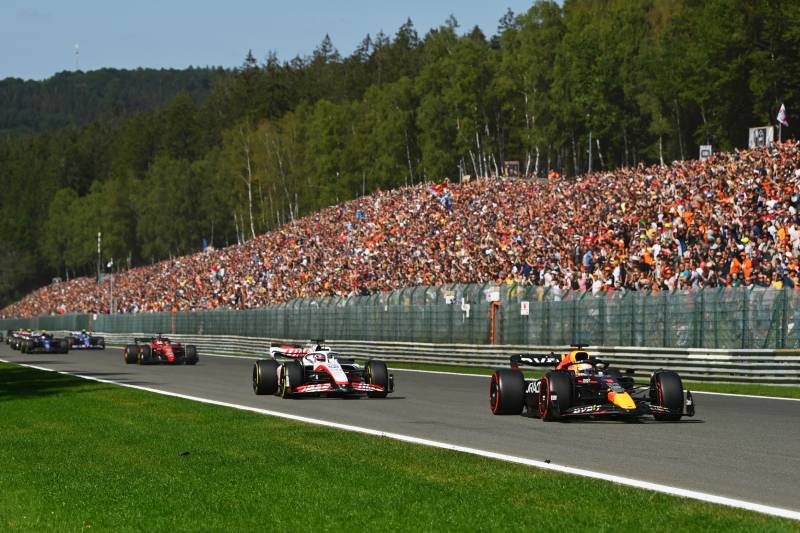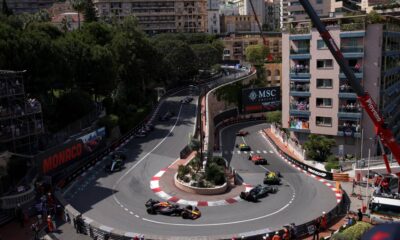Motorsport
Once 24, now 102 or The history of scoring systems in Formula 1
Formula 1 has tried several scoring systems in its 72-year history. One lasted just one year, the other 30 years. But they all had and have one common purpose. To reward the most successful drivers in each race with “points” and to crown the champion who manages to collect the most.

Formula 1 has tried several scoring systems in its 72-year history. One lasted just one year, the other 30 years. But they all had and have one common purpose. To reward the most successful drivers in each race with “points” and to crown the champion who manages to collect the most. In the following lines, let’s take a look at all the points structures that have ever appeared in F1.
50. years
During the first decade of the World Championship, the cumulative points awarded after each Grand Prix were the fewest in the history of the sport. The five fastest drivers were rewarded with seemingly meaningless and meaningless numbers. The Grand Prix winner received 8 points, the runner-up 6, the third 4, the fourth 3 and the fifth 2.
Understandably, then, points were something very rare, especially for those who did not have the machinery that the stars like Fangio, Ascari, Moss and Brabham raced with.
Anyone who set the fastest lap in a given race could add one bonus point to their stats. It was to be used for those who, for various reasons, could not fight for the top positions. On the other hand, it was also for those who were at the front and wanted to increase their points tally.
However, let’s remember that at this time, and for many decades to come, riders’ times were measured with simple stopwatches.
Contributing to this, it was not unreasonable that this point was shared equally between two or more riders in the event of a tie. An extreme example was the 1954 British Grand Prix, where all seven drivers set exactly the same time.
Thus, after each race, a total of 24 points were distributed. By comparison, the winner of the Grand Prix today receives more points (25). Back then, everyone could only dream of the current 102 points.
60. years
In 1960, the first change in the scoring system took place. The point for the fastest lap found its new place in the elite six at the end of the race. Critics of this move argued that drivers outside the top six would lose their motivation to race and only those who consistently finished in the top positions would be enriched. However, it was also still argued that the gap between the Grand Prix winner and the runner-up under the chequered flag was too small.
A season later, there was again a slight adjustment. The Federation Internationale de l’Automobile (FIA) listened to the voices about the small difference between first and second at the finish. It decided to increase the points gain for the Grand Prix winner to 9 pints. There was no change in the Constructors’ Cup. The 1961 season thus became the only season in which there were two different scoring systems.
In order to maintain clarity, the FIA consolidated the two systems into one from 1962 onwards. The 9-6-4-3-2-1 scoring system subsequently remained in Formula One for 30 years. No wonder many started their F1 spectator journey with it.
90. years
Triumph in a Grand Prix is something that all participants should strive for. And whoever succeeds should be rewarded accordingly. Especially if he deservedly wins more often than his rivals. It must not happen that after one unlucky retirement another rider can only get dangerously close to him in points with consistent results.
It was out of this conviction that the FIA changed the points system after three long decades. In the end, it was only a cosmetic change, but one that played a big role, especially in the championship race. The winner now earned an even 10 points. The other top five in the race gained nothing extra. The gap between first and second has now grown to four points.
In addition, the FIA abolished the rule of dropping a given number of worst results for each driver.
This came from the experience of the 1988 edition, when although Alain Prost had collected a total of 105 points compared to Ayrton Senna’s 94, the Frenchman could only count 87. He had to write off three second places because of his overly brilliant results.
While Senna’s disqualification from the Brazilian Grand Prix was ignored, plus fourth and sixth places from the Portuguese and Spanish Grand Prix respectively. As a result, Senna took just four points off his tally, and also celebrated his first world championship title as a result. From the 1991 season onwards, every Grand Prix counted towards the championship.
The new millennium
Michael Schumacher’s dominance at the start of the third millennium infuriated all those involved in the queen of motorsport, who wished for just a touch more balance.
This frustration also fell on the FIA, which expanded the points positions from six to eight under the pretext of making the title fight more interesting. At the same time, it left 10 points to the winner and everyone behind him improved. Second could enjoy 8 points, third 6, fourth 5 and eighth 1.
However, the reasonable person realised that while this dramatised the championship courses, the Grand Prix had lost its significance in his view. There was no point in fighting for the next higher position under this flimsy pretext.
Whatever the 10-8-6-5-4-3-2-1 system used from 2003-2009, which became a thorn in the side of all traditionally-minded fans, the championship crown was fought for four times (2003, 2006, 2007, 2008) under this points structure until the last race of the season.
And now?
Until the 2009 season, statisticians had a relatively easy job comparing the point totals of all drivers in F1 history, especially the richest. But starting in 2010, the FIA burned them out. With the arrival of two new teams and the expansion of the starting field to 24 drivers, the points bag was also torn.
The winner has now come away with 25 points. Considering the significance of the Grand Prix triumph, the second place finisher received 18 points, third 15, fourth 12, fifth 10, sixth 8, seventh 6, eighth 4, ninth 2 and the tenth place was left with 1 point.
This system has largely remained in place to this day. The fastest lap bonus point made its big comeback in 2019, but only for anyone finishing in the top 10.
Not to be missed is the mention of sprints, which made their F1 debut last year in three select Grands Prix. Last year the top three fastest (3-2-1) scored points, this year the entire top 8 (8-7-6-5-4-3-2-1).
Finally, let’s add the fact that until last season, drivers could receive half points if they failed to cover 75% of the total race distance. After a farce called the 2021 Belgian Grand Prix, starting this season, a rule was introduced that will hand out points in the event of not finishing within the 3 hour time limit, based on how many quarters of the race were completed.
Source: Formula 1:: From Start to Finish (Robert Pavelka, 2011)












